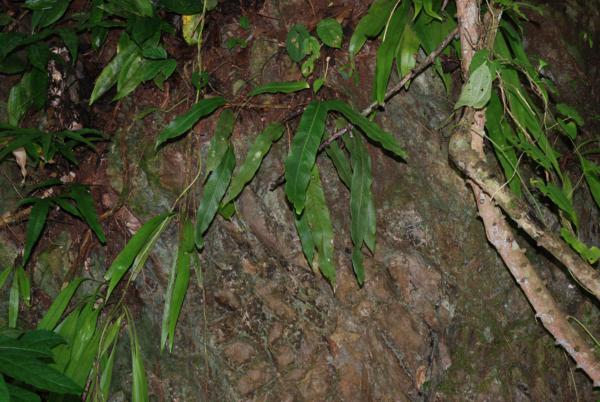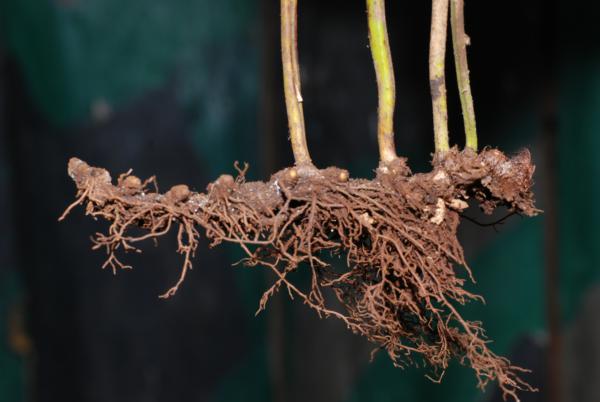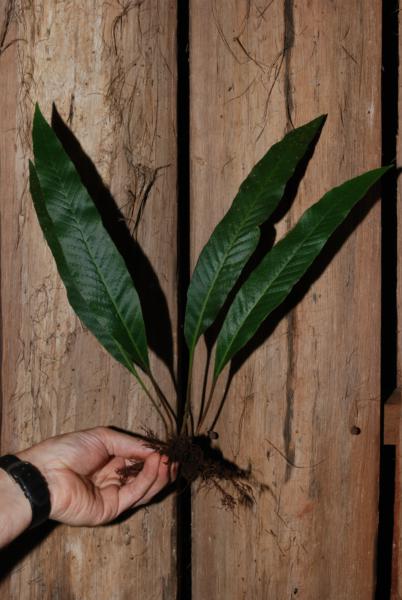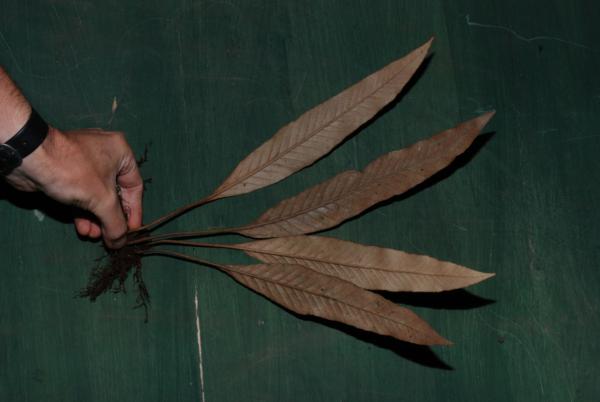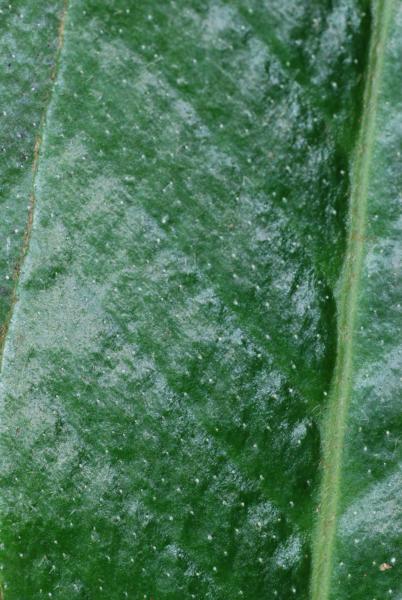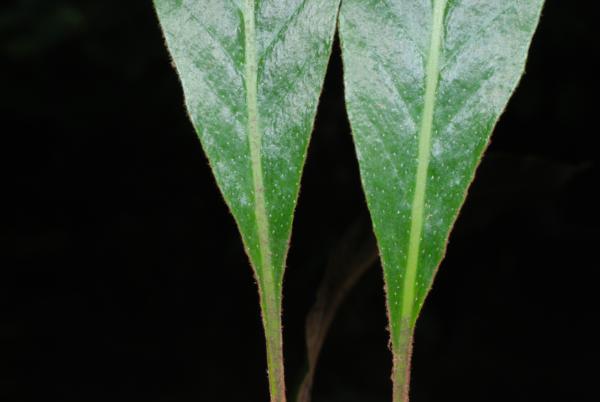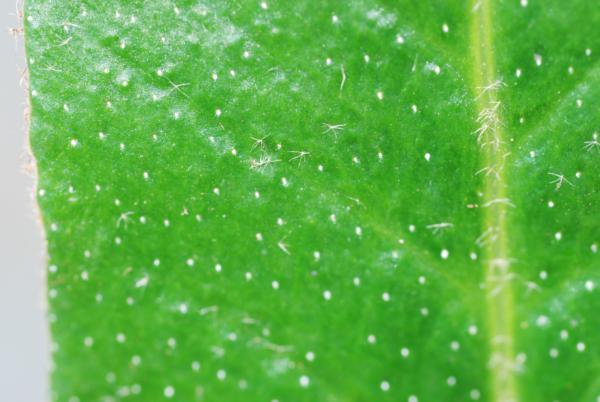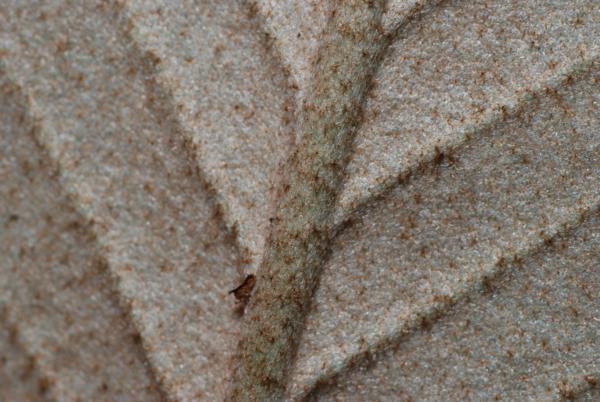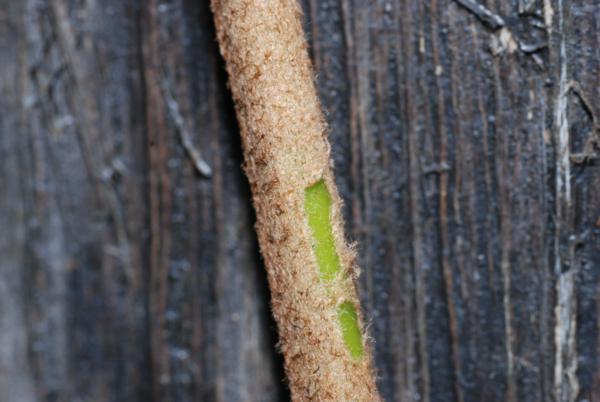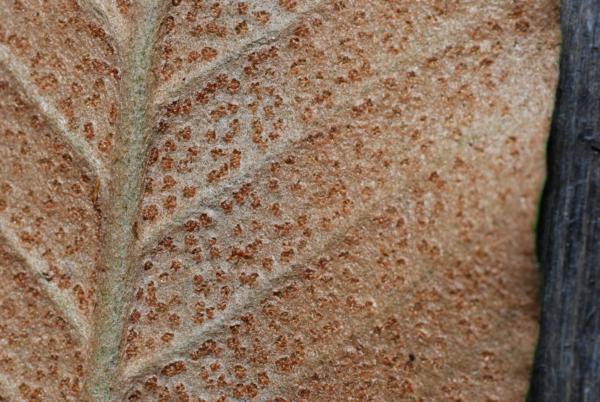
Pyrrosia stigmosa (Sw.) Ching
Family
Polypodiaceae
Nomenclature
Pyrrosia stigmosa (Sw.) Ching, Bull. Chin. Bot. Soc. 1: 67. 1935; Tardieu & C.Chr., Fl. Indo-Chine 7(2): 513. 1941; Holttum, Rev. Fl. Malaya ed. 1, 2: 148. 1955 [‘1954’]; Holttum, Dansk Bot. Ark. 20: 19. 1961; Holttum, Dansk Bot. Ark 23: 230. 1965; Seidenf., Nat. Hist. Bull. Siam Soc. 19: 86. 1958; Tagawa & K.Iwats., SouthE. Asian Stud. 5: 48. 1967; Hovenkamp, Leiden Bot. Ser. 9: 252, f. 17. 1986; Tagawa & K.Iwats., Fl. Thailand 3: 504. 1989; Hovenkamp, Fl. Males., Ser. II, Ferns and Fern Allies 3: 174. 1998; Boonkerd & Pollawatn, Pterid. Thailand: 260, 288. 2000; Newman et al., Checkl. Vasc. Pl. Lao PDR: 30. 2007. – Polypodium stigmosum Sw., Schrad. J. Bot. 1800(2): 21. 1801. – Niphobolus stigmosus (Sw.) T.Moore, Index Fil.: 276. 1861; Bedd., Handb. Ferns Brit. India: 328, f. 178. 1883. – Type: Thunberg s.n. (S), Java.
Description
Rhizome short creeping, bearing closely spaced fronds, 3–4.5 mm diam., dark brown to nearly black, densely scaly at apical portion; scales attached at base, ovate with long tails, about 1 mm diam. at base, about 6 mm long, bi-coloured with nearly black central portion at base, dark brown margin of base and long tails, rather stiff but downy at apical portion. Fronds simple. Stipes 3–25(–37) cm long, scaly at base, scales similar to rhizome scales, densely hairy throughout, brown. Laminae lanceolate, attenuately acuminate at apex, cuneate at base, not so long decurrent downwards, (11–)15–30(–48) by (1.5–)2.5–5.2 cm, the upper surface stellate hairy or glabrescent, green, with many scattered hydathodes, lower surface densely hairy; midrib and main veins distinct, raised beneath, veins hardly visible, anastomosing, the margin sometimes involute; rigid coriaceous. Sori round , covering the whole upper portion of the fronds underneath.
Distribution in Thailand
NORTHERN: Mae Hong Son, Chiang Mai, Chiang Rai, Lampang, Tak, Phitsanulok; NORTH-EASTERN: Loei, Nakhon Phanom; SOUTH-WESTERN: Kanchanaburi, Prachuap Khiri Khan; CENTRAL: Saraburi, Nakhon Nayok; SOUTH-EASTERN: Prachin Buri, Chanthaburi; PENINSULAR: Chumphon, Surat Thani, Phangnga, Trang, Yala.
Distribution in Laos
Champasak.
Distribution in Cambodia
Battambang, Kompong Speu, Mondulkiri, Pursat, Stung Treng.
Wider Distribution
Burma, Indochina and southwards to W & C Malesia.
Ecology
On dry to moist rocks usually in light shade at low altitudes less than 500 m or rarely to 1300 m alt., not so rare throughout Thailand.
Proposed IUCN Conservation Assessment
Least Concern (LC). This species is widespread and not under any known threat.
Voucher specimens - Thailand
Middleton et al. 5019, Chiang Mai, Kio Phawok border checkpoint (E); Middleton et al. 4292, Surat Thani, Khao Photha Daeng Lam (E); Middleton et al. 4314, Surat Thani, Khao Sok National Park (E).
Voucher specimens - Laos
Maxwell 98-426, Champasak (CMU)
Voucher specimens - Cambodia
Long et al. CL455, Mondulkiri (P).
Habit
Rhizome
Whole plant from above
Whole plant from beneath
Upper surface of fronds
Base of fronds
Hydathodes and stellate hairs
Lower surface of frond
Stipe with some sales removed
Sori emerging through dense stellate hairs
Site hosted by the Royal Botanic Garden Edinburgh. Content managed by Stuart Lindsay, Gardens by the Bay, Singapore and David Middleton, Singapore Botanic Gardens. Last updated 24 January 2012
